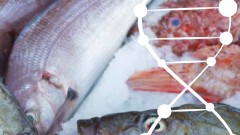When you buy whole fish at a fish market, it's possible to visually identify what fish your buying. When a fish is heavily processes, such as a frozen fish stick, it is near impossible to visually identify was species of fish is in it. In processed foods is where most mislabeling and misrepresentation of fish products occurs, mainly because its easier to get away with. Producers typically will substitute, mislabel, or misrepresent a fish product in order to make a greater profit, or utilize a species of fish that would otherwise not be legal to catch/sell. If your selling a fish stick and advertise it as containing cod, but secretly make it with a cheaper cod like substitute, they are less expensive to make and you can sell it at cod value. Other primary sources of mislabeling are between fishermen and buyers if the fishermen call a fish by a common name multiple species share.
This article, published in "Fisheries", delves into the global causes and effects of fish product misrepresentation and the genetic tools they used to gather data from whole and proceed fish to find the statistical rate or mislabeling. They collected 245 fish sample from a variety of markets in Spain, such as grocery stores, fish markets, restaurants, and wholesales food venues, and found that 7% of all fish sold were not what they were advertised as.
They authenticated all fish collected using mitochondrial genes, which were extracted from even the most processed of fish products by means of polymerase chain reaction (PCR) amplification. An alternative method of identifying fish is bar coding mitochondrial cytochrome oxidase sub unit I (COI). The article itself when into excruciating detail as to the experimental process, far beyond the scope of this blog post. Interestingly, they found the greatest amount of fish fraud occurring in Wholesale stores, followed by restaurants and hypermarkets, with the most reliable fish products being sold at fish markets and grocery stores.
The value of these methods of genetically authenticating fish products is protecting consumers from paying top dollar for bottom of the barrel fish products, enforcing fishing regulations by penalizing those passing of the fraudulent fish, and protecting endangered fish stocks from being illegally harvested and sold by names of fish that are legal to sell. Having a label of fish products that genetically authenticates that your tuna is tuna ensures there are no name changing shenanigans between the fishermen catching the fish, and the store/restaurant/etc that supplies the fish to your dinner plate.
Muñoz-Colmenero M, Blanco O., Arias V., Martinez J., Garcia-Vazquez E.(2016). DNA
Authentication of Fish Products Reveals Mislabeling Associated with Seafood Processing. Fisheries, 41, 128-137.

This is a very interesting article. I would like to see more research on it
ReplyDelete